By Coyote Log Homes Inc
Building a log home is a specialized trade with many unique terms and definitions.
We’ve put together this useful log home glossary to help you get a better idea of what goes into the creation of our handcrafted log homes and accessories.
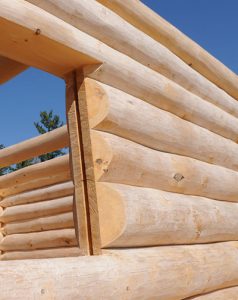
Scribe Fit / Full Scribe / Scandinavian Style
Coyote Log Homes specializes in the construction of full scribe log homes (commonly called Scandinavian style log homes). Using this method, the logs are left naturally round and are expertly carved and crafted to fit tightly on top of each other. This fitting process is called scribing, and it’s all about transferring the shape of one log surface onto another. In the Scandinavian style, no caulking or chinking is required, as the logs fit tightly together. The joinery used in the corners is called a compression fit saddle notch.
When we build in the Scandinavian style, we strongly believe in overscribing our lateral log grooves, as this technique allows us to form a tighter seal during the construction of the home, and also keeps it tighter over the lifetime of the building to improve energy efficiency and maintain its durability and integrity. For more information about the benefits of overscribing, please see the article on this topic in our Resources section.
Hand Hewn
In the hand-hewn style of log home, the logs are flat on the outside and inside surfaces, but are left naturally round on the top and bottom. Space is left in between the logs for chinking, and the corner joinery used in this method is a dovetail notch. This style is generally seen as being more traditional in appearance.
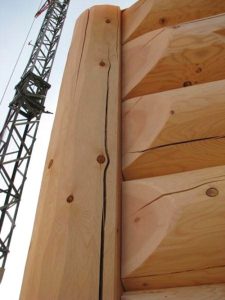
Piece-en-Piece
A truly Canadian log home (the style originated with the first settlers of Quebec), piece-en-piece is a log home construction technique that offers incredible versatility of design. This method utilizes shorter logs (instead of longer, natural logs) placed horizontally between several vertical log posts.
By using shorter log pieces between log columns, it reduces the amount of large equipment needed to construct the cabin. This style can be also be used in conjunction with the Scandinavian style / scribe fit style, making piece-en-piece one of our preferred building methods when constructing smaller structures such as breakfast nooks, screened porches, or gazebos.
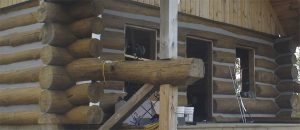
Round Log Chinked / Adirondack Style
Round log chinked is a construction style that uses full round logs, which are stacked horizontally and notched on the corners with saddle notches. Different from scribe fit, where the logs fit tightly on top of each other, a chinked log home features a small gap (usually 1½”) that is left intentionally between the horizontal logs.
This gap is insulated with Styrofoam, and then a thin layer of chink (which is made up to look like “old-time” mortar, giving your log home a very traditional look) is applied over the insulation. This style of log home is generally less expensive to construct than a full scribe log home.
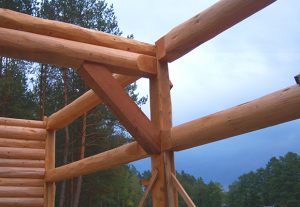
Round Log Post and Beam
Round log post and beam is a style that uses vertical round logs combined with horizontal round beams to form the frame of the home. The round logs are milled flat where they intersect with the conventional framing. This construction style is a perfect compromise between a full log wall system and conventional home construction.
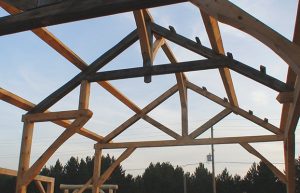
Timber Frame
In the timber frame style, squared timber beams are used instead of round logs. These timbers are used to build the frame (shell) of the home, and conventional walls are then built between the timbers. True timberframing uses mortise and tenon joinery.
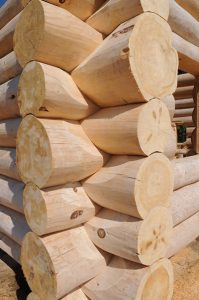
Compression Fit Saddle Notch
Compression fit saddle notch is the type of joinery used in the overscribe construction method. Compression fit simply means that the corner notches are scribed tighter and smaller than the lateral log groove. This causes to the joint to become more compressed, meaning a tighter seal will remain on the corner of the log home.
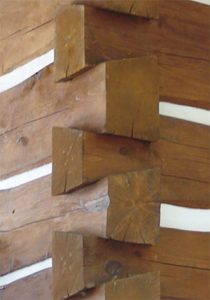
Dovetail Notch
The dovetail notch (named because it resembles the shape of a dove’s fantail) is a self-locking joint that is used to secure the corners on hand hewn log work.
